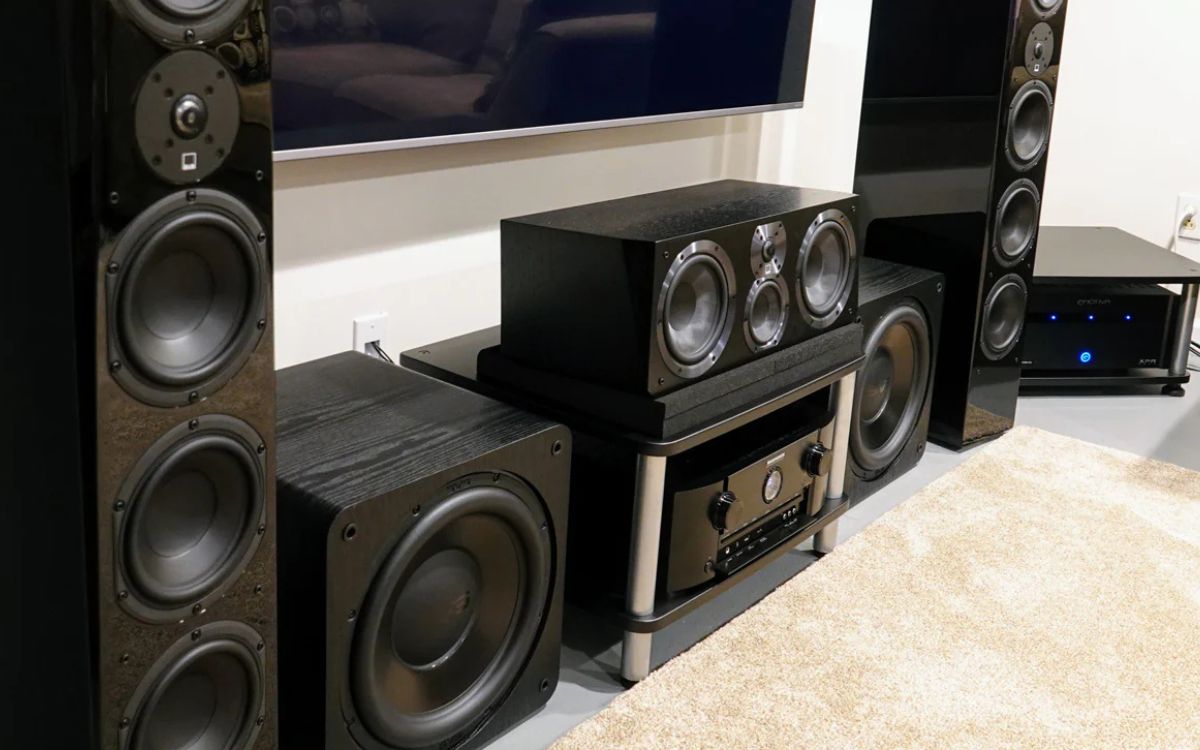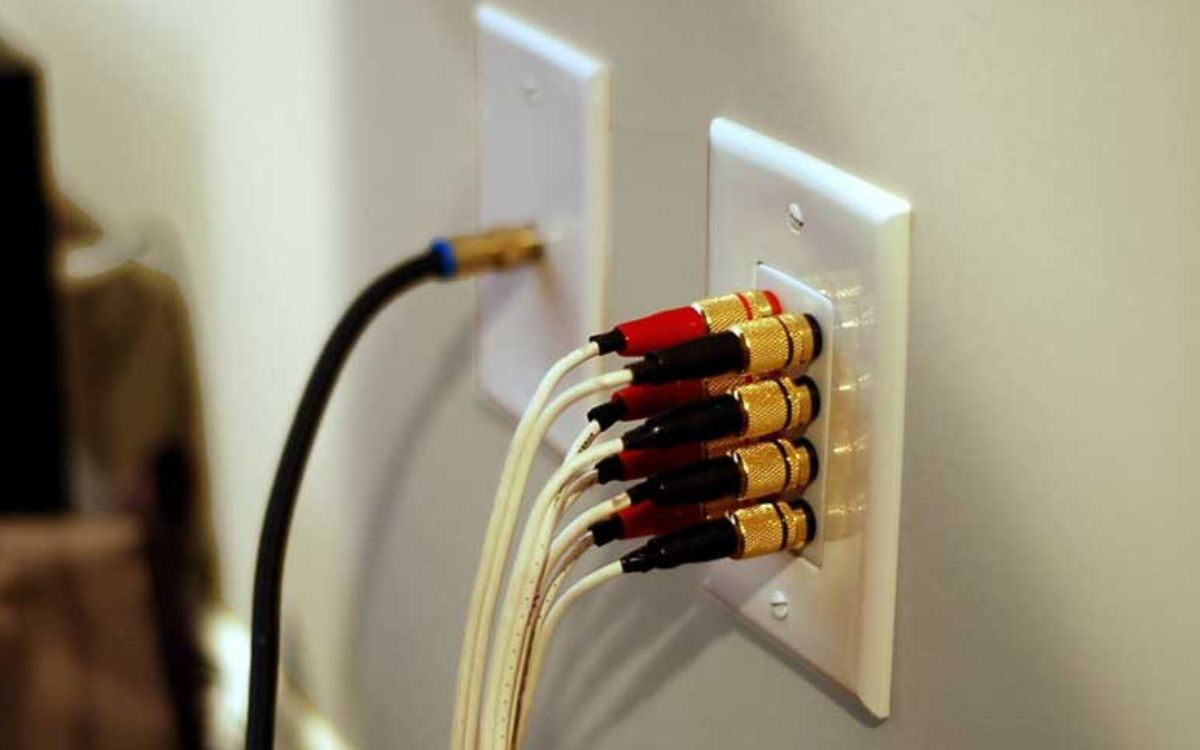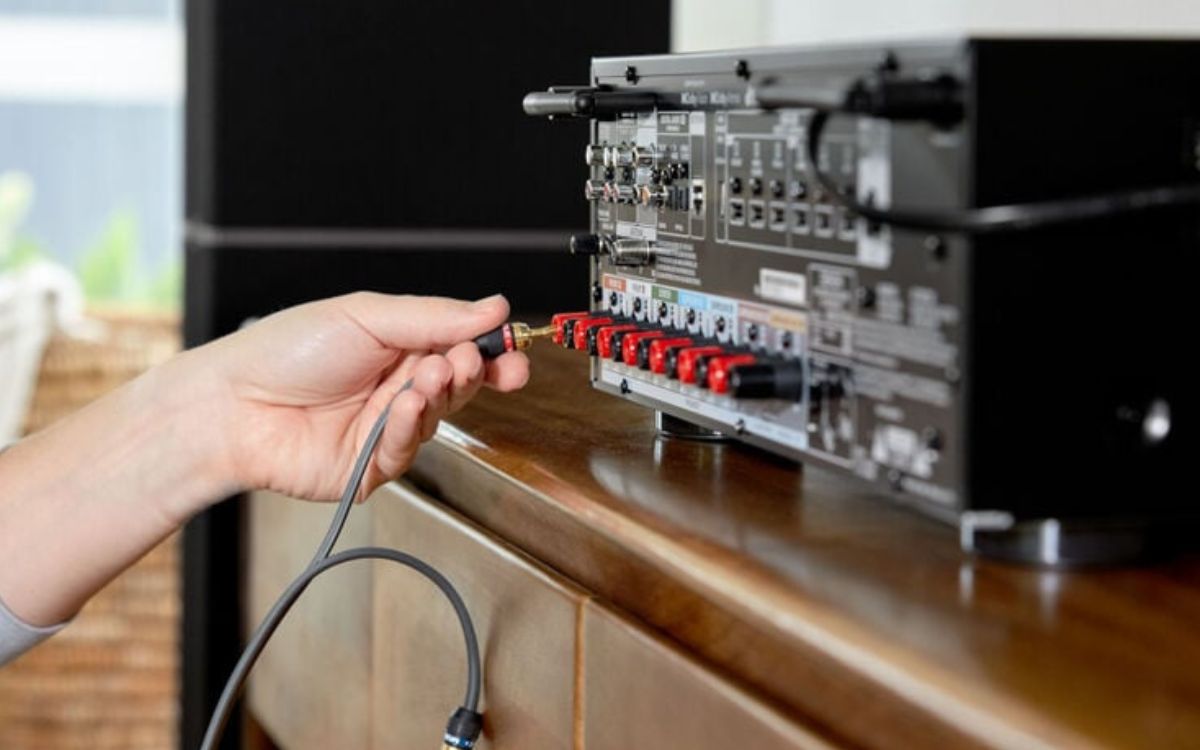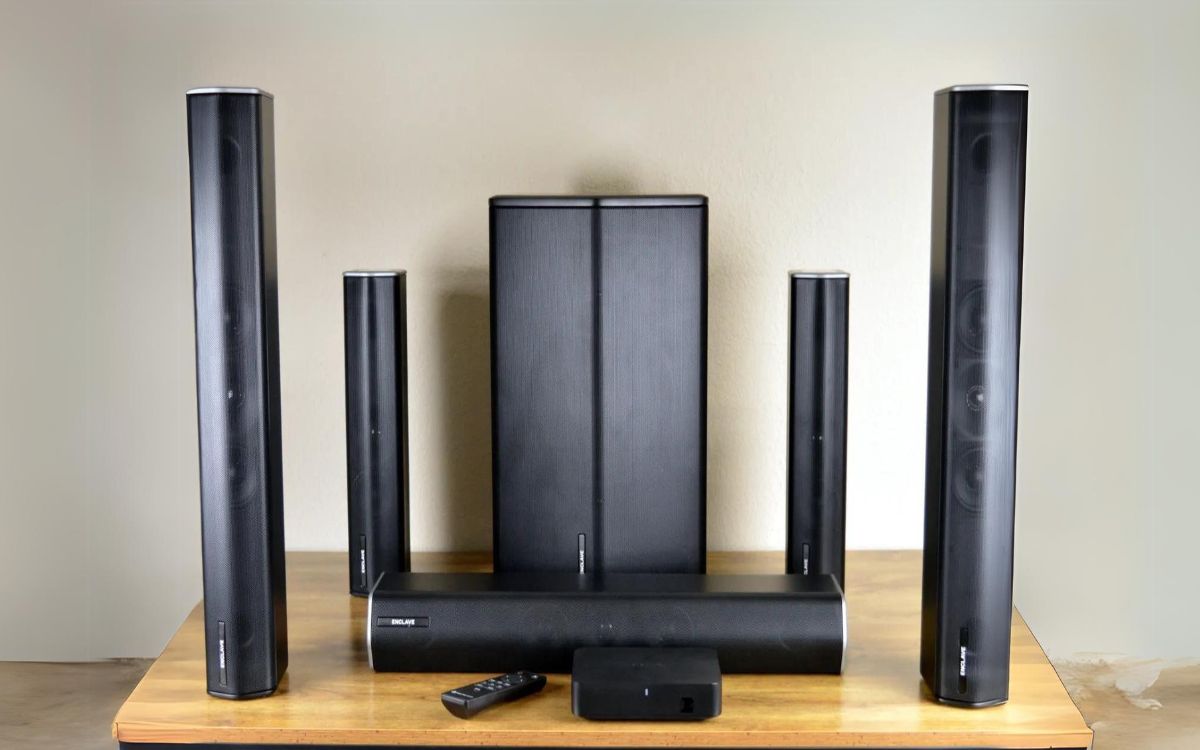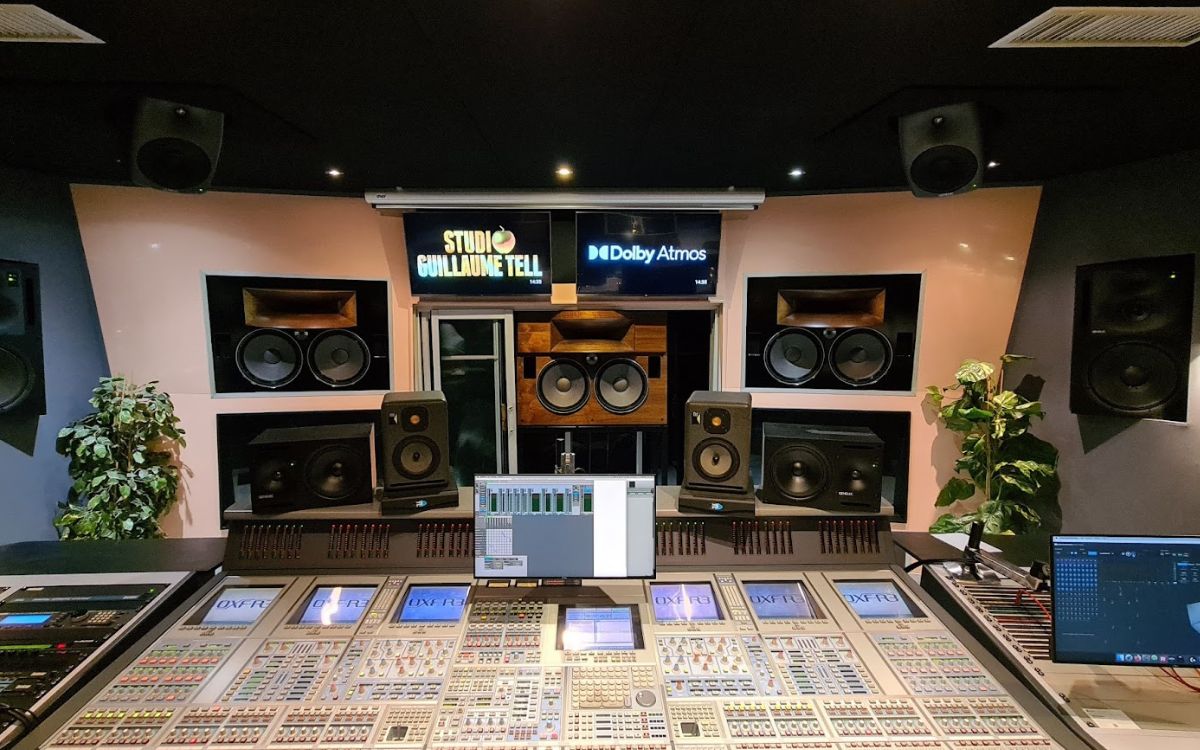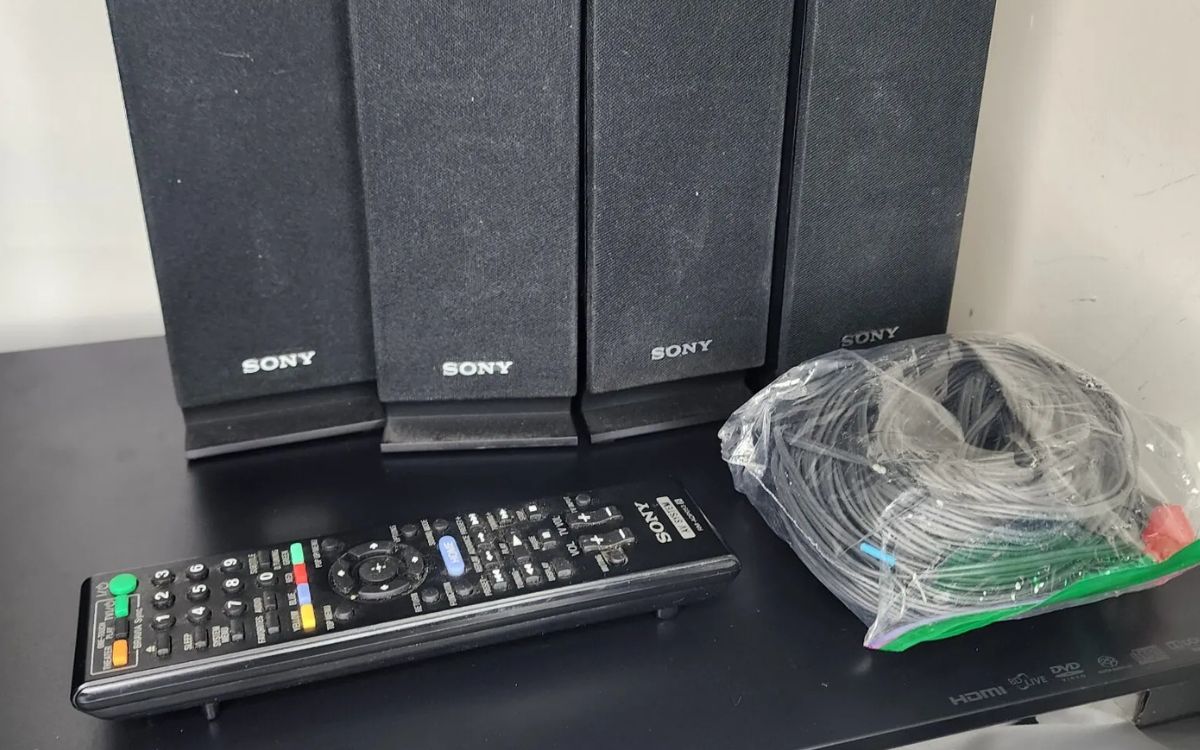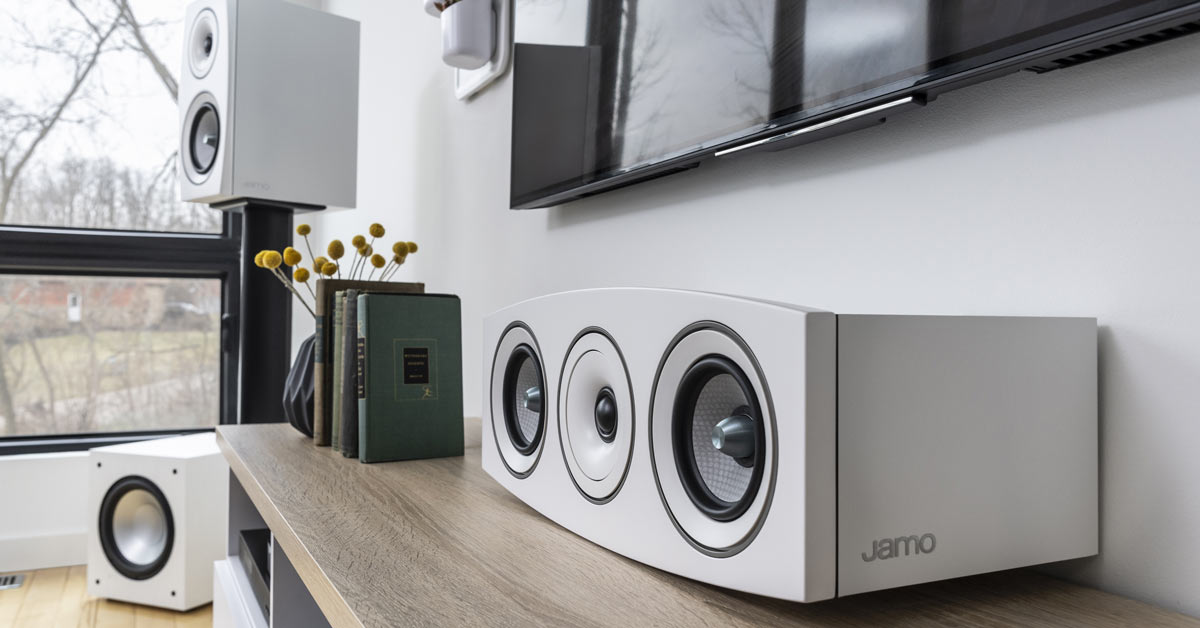Home>Production & Technology>Surround Sound>How To Do Surround Sound When Couch Is Against Back Wall


Surround Sound
How To Do Surround Sound When Couch Is Against Back Wall
Modified: January 22, 2024
Learn how to achieve optimal surround sound in your living room, even when your couch is against the back wall. Enhance your audio experience with our expert tips and tricks.
(Many of the links in this article redirect to a specific reviewed product. Your purchase of these products through affiliate links helps to generate commission for AudioLover.com, at no extra cost. Learn more)
Table of Contents
- Introduction
- Understanding the Acoustics of a Room
- Placement of Surround Sound Speakers
- Adjusting the Speaker Angle and Height
- Using Speaker Stands or Wall Mounts
- Considering Sound Reflectors
- Dealing with Rear Speaker Placement
- Maximizing Sound Performance with Furniture Placement
- Utilizing Sound Absorption and Diffusion Panels
- Conclusion
Introduction
Surround sound is a popular audio technology that brings a cinematic experience to your home. It creates an immersive audio environment by placing speakers strategically around the room, allowing sound to come from various directions. However, setting up surround sound can be a challenge, especially when the couch is against the back wall.
Having the couch against the back wall is a common living room setup that can impact the sound quality. The sound waves from the rear speakers can bounce off the wall and interfere with the direct sound, leading to muddled and uneven audio. But fear not, there are several techniques and adjustments you can make to optimize your surround sound system even with this layout.
In this article, we’ll explore the acoustics of a room, the placement of surround sound speakers, adjusting speaker angles and heights, using speaker stands or wall mounts, considering sound reflectors, dealing with rear speaker placement, maximizing sound performance with furniture placement, and utilizing sound absorption and diffusion panels. By following these tips, you’ll be able to achieve impressive surround sound performance, even when your couch is against the back wall.
So, let’s dive in and learn how to make the most out of your surround sound system with a couch against the back wall!
Understanding the Acoustics of a Room
Before we delve into the specifics of setting up surround sound with a couch against the back wall, it’s crucial to understand the basics of room acoustics. The way sound travels and interacts within a room greatly influences the audio quality and overall experience.
When it comes to acoustics, there are two main factors to consider: reflections and resonances. Reflections occur when sound waves hit surfaces such as walls, ceilings, and floors and bounce back into the room. Resonances, on the other hand, are created when sound waves interact with the room’s dimensions and cause certain frequencies to be amplified or diminished.
In a room with the couch against the back wall, reflections can pose a challenge. The sound waves from the rear speakers may hit the wall behind the couch and reflect back towards the listener. This can cause a phenomenon known as comb filtering, where certain frequencies cancel each other out or create uneven frequency response.
Additionally, resonances within the room can cause certain frequencies to be emphasized or reduced, leading to an unbalanced audio experience. These resonances are influenced by the dimensions, shape, and materials in the room, making each space unique in its acoustic properties.
Understanding the acoustics of your room is essential for optimizing your surround sound system. By taking steps to minimize reflections and address resonances, you can ensure a more accurate and immersive listening experience.
In the next sections, we’ll explore various techniques to overcome the acoustical challenges presented by having a couch against the back wall. These techniques will help you achieve better sound quality and maximize the performance of your surround sound system.
Placement of Surround Sound Speakers
Proper placement of surround sound speakers is crucial for achieving an optimal audio experience, especially when dealing with a room layout where the couch is against the back wall. Here are some key considerations:
1. Front Speakers: The front speakers (left, center, and right) should be placed in front of the couch, at ear level when seated. This ensures that the dialogue and main audio elements are accurately projected towards the listener.
2. Surround Speakers: The surround speakers should ideally be positioned to the sides of the couch, slightly behind the listener. However, with the couch against the back wall, this might not be possible. In this case, try mounting the surround speakers on the side walls or employing speaker stands to position them at ear level.
3. Rear Speakers: If your surround sound setup includes rear speakers, placement becomes trickier when the couch is against the back wall. One option is to mount the rear speakers high on the back wall, facing downwards and angled towards the listening area. This helps minimize direct sound reflections off the walls and provides a more immersive surround sound experience.
4. Subwoofer Placement: The subwoofer, responsible for producing deep bass frequencies, is more forgiving in terms of placement. It can be positioned anywhere in the room to achieve the desired bass response. Experiment with different locations to find the spot that offers the best balance between impact and smoothness.
When setting up the speakers, it’s important to consider the room’s layout and acoustics. Take measurements, consider the dimensions of the space, and experiment with positioning to achieve the best sound balance. Listening tests can help refine the placement, as well as using sound calibration tools and adjusting speaker angles and heights, as we’ll discuss in the next sections.
Remember that speaker placement is not an exact science and may vary depending on room size, shape, and personal preferences. Take the time to experiment and fine-tune the position of your surround sound speakers to achieve the most immersive audio experience possible.
Adjusting the Speaker Angle and Height
Once you have positioned your surround sound speakers, the next step is to fine-tune their angles and heights to optimize the audio performance, especially in a room where the couch is against the back wall. Here’s what you need to know:
1. Speaker Angles: The angle at which the speakers are directed can greatly impact the sound quality. For the front speakers, aim them towards the listener’s seated position for a more focused and accurate soundstage. The surround speakers should be angled slightly inward to create a wider and enveloping sound field. Experiment with different angles to find the sweet spot that delivers the desired audio experience.
2. Speaker Heights: Proper speaker height is crucial to ensure that the sound reaches the listener’s ears at the correct level. If possible, mount the front speakers at ear level when seated. This will help create an optimal listening experience with clear dialogue and accurate sound imaging. For surround speakers, position them at a height that corresponds to the listener’s ear level when seated to maintain consistent sound distribution.
3. Listening Heights: In a room with a couch against the back wall, it’s essential to consider the height at which you and your family typically sit while watching movies or listening to music. Adjust the speaker heights accordingly to match the listening position. This will help improve the accuracy and immersion of the surround sound experience.
4. Tilting and Rotating: Some speakers allow for tilting and rotating adjustments. Take advantage of these features to further optimize the sound projection. Tilting the speakers slightly downward can minimize ceiling reflections, while rotating them can help direct the sound towards the listening area. Experiment with different positions to find the best balance of sound accuracy and dispersion.
It’s important to note that these adjustments may require speaker stands or wall mounts to achieve the desired positioning. Investing in dedicated speaker stands or mounts can greatly enhance the flexibility and adjustability of your surround sound setup.
By fine-tuning the angle and height of your surround sound speakers, you can enhance the overall audio experience, even with the couch against the back wall. Don’t be afraid to experiment and listen critically to find the optimal placement for your specific room and preferences.
Using Speaker Stands or Wall Mounts
When dealing with a room layout where the couch is against the back wall, speaker stands or wall mounts can be invaluable tools for optimizing your surround sound experience. Here’s how they can help:
1. Speaker Stands: Speaker stands provide a stable and adjustable platform for your surround sound speakers. They allow you to position the speakers at the ideal height and angle, even when the couch is against the back wall. Look for stands that have adjustable height and tilting capabilities to fine-tune the speaker positioning. This ensures that the sound is directed towards the listening area and minimizes reflections off the walls.
2. Wall Mounts: Wall mounts offer an alternative option for positioning your surround sound speakers. By securely mounting the speakers on the side or back walls, you can achieve optimal placement and maximize the available space. Wall mounts allow for precise adjustments in terms of angle and height, ensuring that the speakers are directed towards the listening area. This helps create a more immersive audio experience, even with the couch against the back wall.
When considering speaker stands or wall mounts, there are a few key factors to keep in mind:
1. Compatibility: Ensure that the stands or mounts you choose are compatible with your specific speakers. Check the weight capacity and the compatibility with the mounting mechanisms of your speakers to ensure a secure and stable setup.
2. Wire Management: Consider stands or mounts that include wire management options to keep cables tidy and organized. This not only improves the aesthetics but also reduces the risk of tripping hazards.
3. Room Aesthetics: Choose stands or wall mounts that complement the overall design and aesthetics of your room. Speaker stands come in various finishes and styles, allowing you to find an option that seamlessly integrates with your interior décor.
By utilizing speaker stands or wall mounts, you can optimize the placement of your surround sound speakers, even when the couch is against the back wall. They offer greater flexibility and adjustability, ensuring that the speakers are positioned at the ideal height and angle to deliver an exceptional audio experience.
Considering Sound Reflectors
In a room with the couch against the back wall, sound reflections from the rear speakers can be a challenge. However, you can address this issue by using sound reflectors strategically. Sound reflectors are specially designed panels or materials that help redirect sound waves, reducing unwanted reflections and improving the overall audio experience.
Here are a few options to consider when utilizing sound reflectors:
1. Acoustic Panels: Acoustic panels are often used to absorb sound and reduce echoes in a room. However, they can also be used as sound reflectors. By strategically positioning acoustic panels behind the couch and around the rear speakers, you can redirect sound waves towards the desired listening area. This helps minimize the impact of direct wall reflections and enhances the clarity of the surround sound.
2. Diffusion Panels: Diffusion panels are designed to scatter sound rather than absorb or reflect it directly. Placing diffusion panels on the back wall can help disperse sound waves and create a more spacious and natural audio environment. They break up strong reflections and contribute to a more immersive surround sound experience.
3. DIY Solutions: If you prefer a budget-friendly approach, you can create your own sound reflectors using materials like foam boards or reflective fabrics. Experiment with placing these DIY reflectors strategically to redirect sound and minimize unwanted reflections.
When utilizing sound reflectors, it’s important to position them strategically to avoid over-diffusing or over-absorbing sound. Place them in locations where they will most effectively redirect sound towards the listening area without negatively affecting the overall acoustics of the room.
Additionally, combining sound reflectors with proper speaker placement, angle adjustments, and room treatment can provide even better results. It’s a matter of finding the right balance that works for your specific room and surround sound setup.
By considering sound reflectors and incorporating them into your room’s design, you can effectively manage sound reflections and enhance the overall surround sound experience, even in a room where the couch is against the back wall.
Dealing with Rear Speaker Placement
When the couch is against the back wall, finding an ideal placement spot for the rear speakers can be challenging. However, with some creative solutions, you can still achieve a satisfying surround sound experience. Here are some tips for dealing with rear speaker placement:
1. Wall-Mounted Rear Speakers: Mounting the rear speakers on the back wall can help overcome the limitations of a room layout with a couch against the back wall. Position them slightly above ear level and angle them downwards towards the listening area. This placement can minimize reflections off the back wall and enhance the immersion of surround sound.
2. Ceiling-Mounted Rear Speakers: Another option is to mount the rear speakers on the ceiling, just above and slightly behind the seating area. This arrangement can create a more immersive sound experience by directly directing sound downwards. Adjust the angle and position to achieve optimal sound projection towards the listening area.
3. Wireless Rear Speaker Systems: If running cables for rear speakers is impractical, consider using wireless rear speaker systems. These systems eliminate the need for physical cables, allowing you to place the speakers in the most optimal positions without worrying about cable management. Just ensure that the wireless system you choose is compatible with your surround sound receiver and speakers.
4. Virtual Surround Sound: In some cases, virtual surround sound technology can be an alternative when physical rear speakers are not feasible. Virtual surround sound uses advanced audio processing algorithms to create a simulated surround sound experience using only the front and surround speakers. While not a perfect replacement for physical rear speakers, it can still provide an immersive audio experience.
Remember, experimentation is key. Try different placements and configurations to find the setup that works best for your room and personal preferences. Consider using speaker stands, mounts, or brackets to achieve the desired positioning for the rear speakers.
While it might require some creative problem-solving, dealing with rear speaker placement in a room with the couch against the back wall is possible. By exploring various mounting options and considering wireless or virtual surround sound alternatives, you can still enjoy a captivating surround sound experience.
Maximizing Sound Performance with Furniture Placement
In a room where the couch is against the back wall, the placement of furniture can have a significant impact on the sound performance of your surround sound system. By strategically arranging your furniture, you can minimize sound reflections and achieve a more immersive audio experience. Here are some tips for maximizing sound performance with furniture placement:
1. Position the Couch Away from the Wall: While the couch against the back wall might be the most convenient arrangement for your room, pulling it away from the wall can improve the sound quality. Leaving a small gap between the couch and the wall helps reduce the intensity of sound reflections that bounce back from the rear speakers. Experiment with different distances to find the sweet spot for optimal audio performance.
2. Use Shelving or Bookcases: Placing open shelving units or bookcases near the back wall can act as sound diffusers. These units disperse sound waves, reducing the chances of strong reflections. They also add visual interest to the room and provide additional storage space for your media collection.
3. Add Acoustic Panels Behind the Couch: Installing acoustic panels on the back wall behind the couch can help absorb sound reflections and improve audio clarity. These panels come in various designs and finishes, allowing you to choose an option that complements your room’s aesthetic while enhancing the acoustic environment.
4. Consider a Rug or Carpet: Adding a rug or carpet underneath the seating area can help absorb sound and reduce reflections off hard flooring surfaces. This can improve the overall sound quality by minimizing echo and reverberation within the room.
5. Use Room Dividers or Curtains: Room dividers or curtains can be utilized to create separation between the seating area and the back wall. These can help break up sound reflections and minimize the direct impact of the rear speakers’ sound waves on the wall behind the couch.
These furniture placement strategies can help create a more acoustically favorable environment, enhancing the performance of your surround sound system. Experiment with different arrangements and combinations to find the configuration that yields the best audio experience for your room.
Remember, achieving optimal sound performance is a balance of speaker placement, room acoustics, and furniture arrangement. By considering how the placement of furniture affects sound reflections and using strategic techniques, you can maximize the audio quality and overall enjoyment of your surround sound system in a room with the couch against the back wall.
Utilizing Sound Absorption and Diffusion Panels
When setting up a surround sound system with the couch against the back wall, it’s important to address sound reflections and achieve optimal acoustics. One effective way to accomplish this is by utilizing sound absorption and diffusion panels. These panels can help control the sound waves within the room, resulting in improved audio clarity and immersion. Here’s how you can utilize these panels:
1. Sound Absorption Panels: Sound absorption panels are designed to reduce echoes and reverberations by absorbing sound waves. Placing these panels on the back wall behind the couch can help minimize sound reflections and enhance the clarity of the surround sound system. Look for panels that have a high Noise Reduction Coefficient (NRC) rating to ensure effective sound absorption.
2. Placement of Sound Absorption Panels: To achieve optimal sound absorption, position the panels strategically on the back wall. Start by placing them at the first reflection points – the spots where sound waves from the speakers directly hit the wall and bounce towards the listener. Additionally, consider placing panels on any large, flat surfaces that may contribute to sound reflections, such as adjacent walls or large furniture pieces. Experiment with different panel arrangements to find the configuration that offers the best sound reduction and clarity.
3. Sound Diffusion Panels: Sound diffusion panels scatter sound waves, breaking up direct reflections and creating a more spacious and natural audio environment. Placing diffusion panels on the back wall or the side walls can help disperse sound and improve the envelopment of the surround sound system. Diffusion panels are especially beneficial when the room has a square or rectangular shape, as they help break up the parallel wall reflections that can cause standing waves and unwanted resonances.
4. DIY Options: If purchasing commercial sound absorption and diffusion panels is not feasible, you can opt for DIY alternatives. Materials such as acoustic foam, diffuser panels, or even curtains can be used to create your own sound treatment. Online tutorials and guides can help you create effective and budget-friendly solutions for sound control in your room.
By utilizing sound absorption and diffusion panels, you can effectively manage sound reflections and improve the overall acoustics of your room. These panels work in conjunction with proper speaker placement, furniture arrangement, and other room treatments to create a more immersive and enjoyable surround sound experience.
Remember to experiment and fine-tune the placement and configuration of the panels to achieve the desired sound results. Each room is unique, and finding the right combination of sound absorption and diffusion can greatly enhance the audio quality of your surround sound system, even with the couch against the back wall.
Conclusion
Setting up a surround sound system when the couch is against the back wall may present some challenges, but with the right techniques and adjustments, you can still achieve impressive sound performance. By understanding the acoustics of your room, properly positioning your surround sound speakers, utilizing speaker stands or wall mounts, considering sound reflectors, addressing rear speaker placement, maximizing sound performance with furniture placement, and utilizing sound absorption and diffusion panels, you can optimize your surround sound experience.
Remember that each room is unique, and it may require some experimentation and fine-tuning to find the ideal setup for your space. Take the time to listen critically, adjust speaker angles and heights, and consider implementing room treatments to enhance the audio quality and immersion of your surround sound system.
While the couch being against the back wall may present acoustic challenges, with careful attention to speaker placement, room treatment, and furniture arrangement, you can create a more immersive and enjoyable surround sound experience. Whether you’re watching movies, playing video games, or listening to music, the right setup will transport you to a world of captivating audio.
So, get ready to immerse yourself in the powerful and immersive surround sound experience, right from the comfort of your couch, even when it’s against the back wall!


